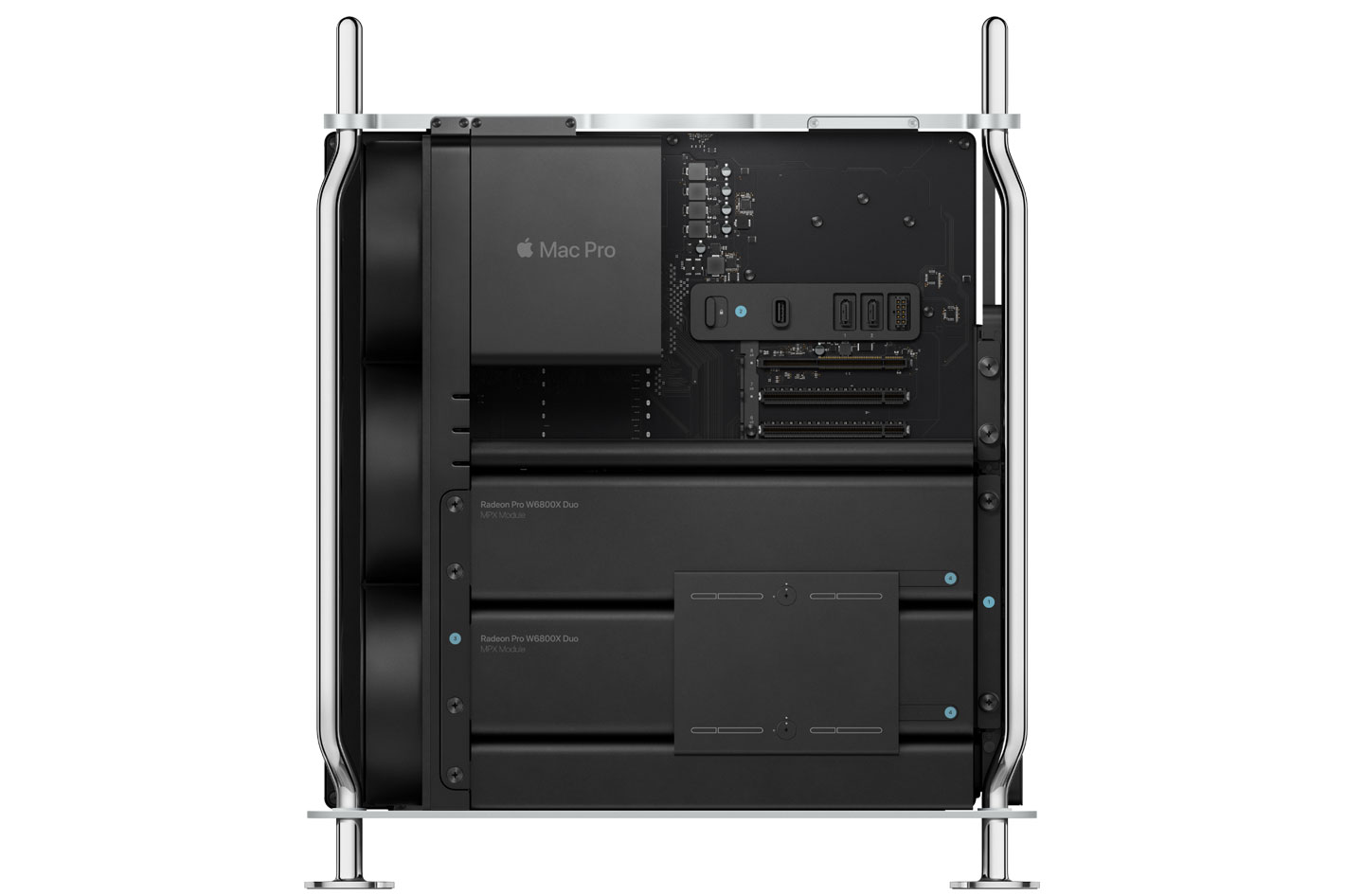
If you want a big performance boost to your Mac Pro’s graphics horsepower, then look no further: Apple has just introduced three new graphics card modules for Mac Pro, — ideal for demanding GPU-heavy applications like Octane X, DaVinci Resolve, Cinema 4D and Final Cut Pro.
The new modules are based on AMD’s next-generation graphics processor — the Radeon Pro W6000-Series GPU — and comes in three variants, the Radeon Pro W6800X MPX Module, Radeon Pro W6800X Duo MPX Module and the Radeon Pro W6900X MPX Module. The Mac Pro Expansion Module, or MPX Module allows the system to deliver the highest-possible graphics performance and provide seamless integration. MPX Modules provide a larger form factor, more power, and cableless integration into Mac Pro.
In fact, Mac Pro was architected for multiple modular GPUs to enable configurability and upgradability, as the typical industry-standard double-wide GPU card has many challenges. First, the thermal systems, especially on-card fans, weren’t designed as part of the overall system thermal architecture. As Apple notes in a document that explains the system and the choices made, graphics cards “are often loud and not well-managed. In multi-GPU systems, the fans can actually compete with each other for airflow, impacting performance. Second, the AUX power requirements make GPU cards more complicated to install. Third, they don’t enable Thunderbolt, either on-card or in the system. So, Thunderbolt isn’t native on the card (and if it were, it would steal from the GPU PCIe bandwidth), and there is not a good solution to route DisplayPort video from the GPU into the Thunderbolt controllers without additional cables and complexity.”
Apple set out to address these issues by designing a better solution for modular GPU integration—the Mac Pro Expansion Module. The design had four simple goals: enable maximum performance; enable Thunderbolt on the GPU module; enable easy, cable-free installation; and enable backward compatibility with industry-standard PCI Express cards.
Mac Pro has system support for two MPX bays, enabling two GPU modules in the system for up to 1000W of graphics power. When a half-size MPX Module is installed, an extra double-wide PCIe slot becomes available—with x8 bandwidth in the lower MPX bay, and x16 bandwidth in the upper MPX bay. Further, because MPX Modules are based on the industry-standard PCI Express, off-the-shelf graphics cards can be installed as well. Each MPX bay can support two doublewide cards and up to 300W of AUX power via two 8-pin connectors on the MLB. Mac Pro will offer a range of GPU performance for pro customers.
Here are some of the key characteristics of the three new graphics card modules for Mac Pro shared by Apple:
- Mac Pro supports two MPX Modules and when populated with two W6800X Duo cards delivers an immense 60 teraflops of graphics performance and 128GB of memory.
- These GPUs also feature Infinity Fabric Link, now allowing up to 4 GPUs (two Duo modules) to connect at 84GB/s per link in each direction (168GB/s bi-directional bandwidth) – 5x faster than the PCIe bus.
- The Radeon Pro W6000-series MPX Modules each feature 4 additional Thunderbolt 3 ports and an HDMI 2 port, so as users add more graphics, they also get more connectivity with up to 12 Thunderbolt 3 ports.
- These new GPUs replace the AMD Vega II MPX Modules available with Mac Pro today and will be offered both as configure-to-order options for new Mac Pro orders as well as kits for existing customers looking to add more GPU performance to their Mac Pro.
The new GPU cards for Mac Pro will supercharge pro workflows like never before, delivering huge gains in performance across a variety of pro apps, including: up to 84% faster performance when running Octane X; up to 26% increase in frame rate when doing realtime 3D interaction in Maxon Cinema 4D; up to 23% faster performance when using DaVinci Resolve.
The new graphics modules will be sold both as a configure to order option when purchasing a new Mac Pro or as standalone kits for existing Mac Pro customers who would like to upgrade. The AMD Radeon Pro Vega II MPX Module and AMD Radeon Pro Vega II Duo MPX Module will no longer be available as a configurable option but will remain available as a standalone kit to existing customers.
